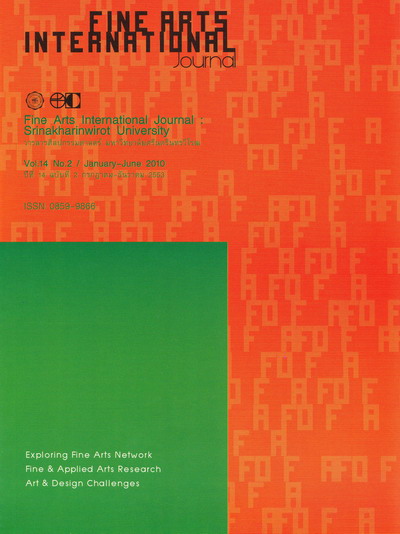Research and Development of Residence’s Living Furniture Design with Slate Material: A Case Study of Slate Material in Pakchong District, Nakorn Ratchasima Province
Keywords:
Teaching, Media, Free Expression of Students, Atmosphere, ActivitiesAbstract
This study aimed to develop living furniture design for residence with slate material in order to add value to goods including enhancing local profession as well. It was found that slate material in Pakchong district, Nakorn Rachasima province gained sufficient property used in product designing, especially residence’s living furniture as follow:
The design was not the imitation of the living furniture in the market. The addition of value was to mix other material in order to innovate the design and included slate material, as well as local wood which results in the uniqueness in accordance with nature. Moreover, it could be as the model for other product design. The property of slate was strong and had natural color to make the design harmonized as to good environment for residence.
The researcher developed four patterns and then constructed the residence’s living furniture with slate material as the last design through satisfaction survey. The research was made by surveying four designs and gaining expert advices to improve and develop a new design with standardized uniqueness of shape and texture as to the natural design of slate and how to mix its construct with the kind of method. According to the satisfaction survey, all respondents (100%) returned questionnaire. It was found that they preferred the design 4 (55%), they used the living furniture 1-3 times/ week (47%), most of living furniture used was made from slate material in design 4 (55%) and it was attractive and had local uniqueness (47%), including most preferred in the residence (68%). The interesting form of design were products made of local slate material (40%), the interesting design for residence used was harmonized texture and color (35%), the most improved shape was structure design (40%). The new developed living furniture should gain good image and could compete with products in the market as design 4 (50%), whereas its utilization for satisfaction as efficiency (47%), and different design (45%).
Considering the effectiveness of four patterns of living furniture from 100 respondents in order to finalize the last one to develop, it was found that the pattern 1 gained at good level (X=3.96), the pattern 2 gained at the good level (X=4.21), the pattern 3 gained at good level (X=3.43), and the pattern 4 gained at good level (X=4.24). Finally, the second of developed living furniture design with slate material (as pattern 5) was evaluated by twenty of 5-year experts. The results revealed that this pattern was sufficient as to criteria of design, production and utilization. In addition, customers’ satisfaction on design including production of material, process, physical and beauty utilization was at a good level as well.






